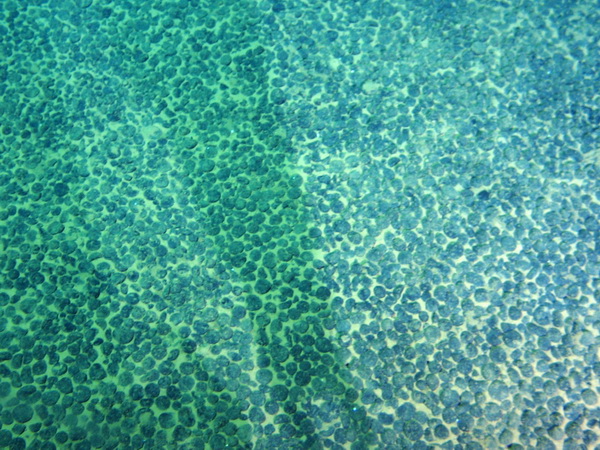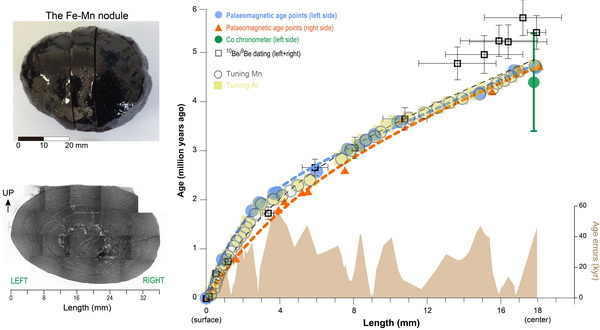Antarctic bottom water (AABW) covers more than two-thirds of the global ocean bottom, and its formation has recently decreased. However, its long-term variability has not been well understood.
Researchers led by Prof. DENG Chenglong from IGG and their collaborators have reconstructed AABW history back to approximately 4.7 million years ago (mya). They found that AABW has collapsed several times and such collapses might have induced moisture transport to fuel the Northern Hemisphere glaciation (NHG).
This work was published in Science Advances on Feb. 24.
The study was based on a 36-mm-diameter Fe-Mn nodule from the Eastern Pacific, located 5,050 m below sea level. The nodule was collected by Guangzhou Marine Geological Survey, China Geological Survey.
Magnetic scanning was an important factor in providing precise dating results. "This is a key, though the final dating was obtained by an integration with 10Be/9Be, flux of metal Co, and astronomical tuning," said Dr. YI Liang from Tongji University, first author of the study and a postdoc at IGG/CAS.
"Since AABW is the main provider of oxygen in the ocean bottom region, we used various scientific methods to identify the relation between metal accumulation in the Fe-Mn nodule and oceanic redox conditions," said Prof. DENG. "Ni, Mn, and Cu contents are used to indicate AABW changes."
These results show that seawater oxygen has experienced a linear increase in the Eastern Pacific since around 3.4 mya. This trend agrees with the observation of the Antarctic Ice Sheet (AIS), suggesting a covariation between them.
Comparing the AABW record with other geological records from the past million years, the researchers found a glacial enhancement of oceanic bottom circulation. This observation implies that atmospheric CO2 may have been regularly stored in the deep ocean when Earth’s climate was cold, e.g., during past glacial periods.
The comparisons clearly highlighted seven intervals of poor seawater oxygen, suggesting AABW influence was reduced to a much lower level. These periods are known as AABW collapse and accompanied an enhancement of North Atlantic Deepwater (NADW) as well as key stages of NHG history, such as when NHG became intensified or amplified.
Although we don’t know what will happen in response to ongoing AIS melting and AABW slowing, AABW collapse might have pulled the Earth into a harsher glacial climate several times in the past.

Fig. 1 Nodules on the seafloor at the study site, photographed by an underwater camera (Image by YAO Huiqiang)

Fig. 2 Investigated Fe-Mn nodule and its age model. (Image by DENG Chenglong’s group)

Fig. 3 AABW record from the Eastern Pacific and major AABW, NADW, and NHG events. (Image by DENG Chenglong’s group)
Contact:
DENG Chenglong
Institute of Geology and Geophysics, Chinese Academy of Sciences
Phone: 86-10-82998087
E-mail: cldeng@mail.iggcas.ac.cn